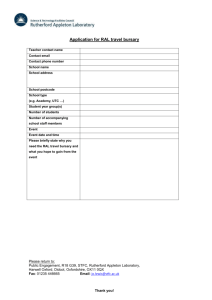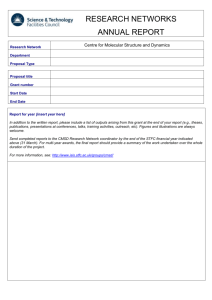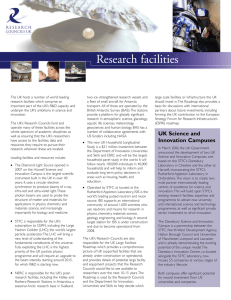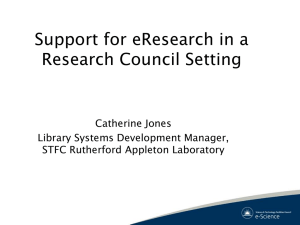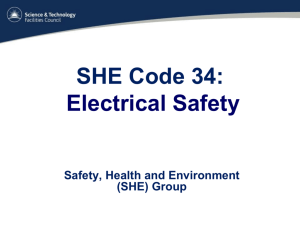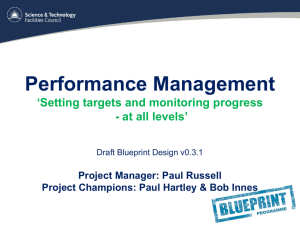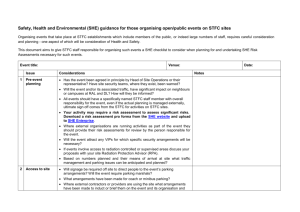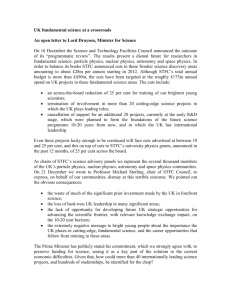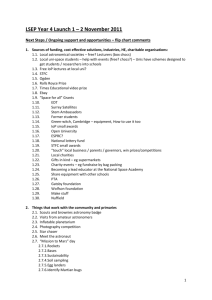UK ATC Staff Forum
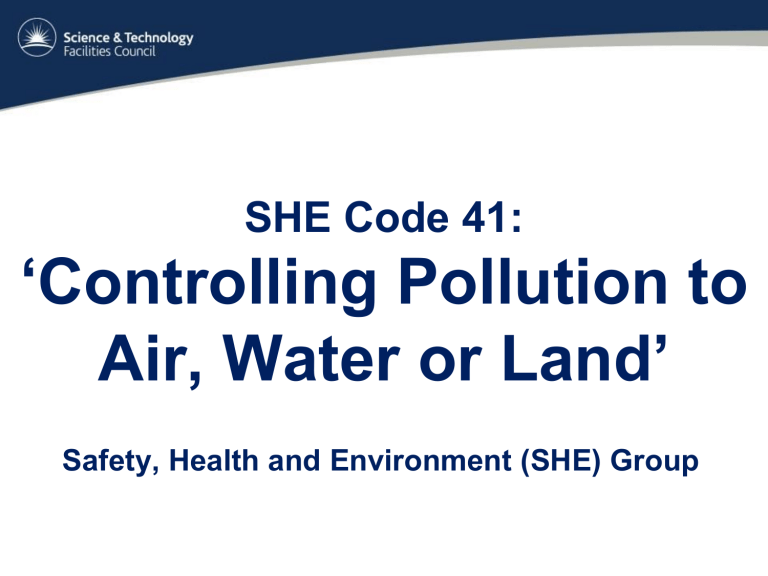
SHE Code 41:
‘Controlling Pollution to
Air, Water or Land’
Safety, Health and Environment (SHE) Group
This code should be read by:
STFC Estates teams - dealing with site drainage, grounds and buildings maintenance which could discharge gaseous or liquid wastes or contaminate land.
STFC staff, contractors and tenants – running facilities, undertaking experiments, developing technologies which create gaseous or liquid wastes.
Safety, Health and
Environment (SHE) Group
SHE Code 41:
‘Controlling
Pollution to Air,
Water or Land ’
Why a code to control pollution?
• STFC requires regulatory authorisation to discharge hazardous substances into site drains, or to air, land or water courses.
• The use of substances which deplete the ozone layer or act as greenhouse gasses may also require authorisation and the equipment using them should be carefully designed and maintained.
Key Features
• Always reduce any liquid or gaseous discharges to a minimum when planning new work or experiments.
• Environmental issues must be included as part of the risk assessment process.
Controls should be implemented which reduce hazardous discharges as far as reasonably practicable. The assessment should include storage issues, for example bunding, as well as accidental spills.
Key features
• Where discharges to air or drain are hazardous consult STFC Environment Officer/SHE Group in advance to see if regulatory authorisation is required.
• NEVER discharge hazardous waste to surface water drains. Ensure all liquid waste is directed to the right drain. STFC drains use the following marking scheme:
• Surface water – Blue
• Radioactive waste - Yellow/Black
• Foul (Domestic) – Red
• Trade waste – Yellow
Key features
• All use of Fluorinated Greenhouse Gases, for example
HFCs, PFCs, SF
6
, should be listed in site F-Gas register which is maintained by site Estates Groups.
Installation and maintenance of equipment using F-
Gases to be undertaken by certified personnel.
• All environmentally sensitive liquids stored outside buildings should, in general, be stored in bunded areas.
• Stores of oil greater than 200L must be bunded, the secondary container should hold at least 110% of the capacity.
• All Environmental incidents should be reported in SHE enterprise.
Additional information
• Where STFC modifies or stores waste, it may require additional regulatory authorisation. For example:
– Composting
– Bailing cardboard
• Contact SHE Group for more information.
SHE Training
‘Environmental Awareness training’ is available for those involved in planning projects.
To book this training contact your local SHE training contacts: RAL 8288; DL 3600; ROE 8325
Further questions should be directed to SHE Group
Gareth Baker, DL, 3285
Graeme Finlan , DL, 3147, RAL, 6249
Mark Roberts , DL, 3283
Matt Dickson , RAL, 5329
Mark Collins , ROE, 273
Or your Departmental Safety Contact
